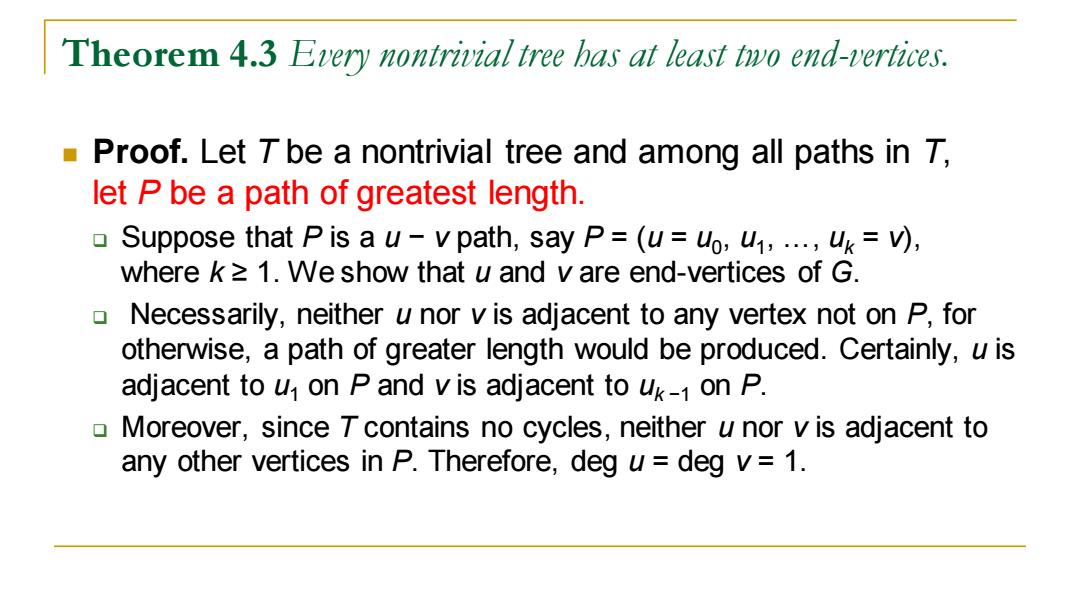正在加载图片...

Theorem 4.3 Every nontrivial tree has at least two end-vertices. Proof.Let T be a nontrivial tree and among all paths in T, let P be a path of greatest length. 口 Suppose that P is a u-v path,say P=(u=uo,u,...uk=v), where k=1.We show that u and v are end-vertices of G. Necessarily,neither u nor v is adjacent to any vertex not on P,for otherwise,a path of greater length would be produced.Certainly,u is adjacent to u on P and v is adjacent to uk-1 on P. Moreover,since T contains no cycles,neither u nor v is adjacent to any other vertices in P.Therefore,deg u=deg v=1.Theorem 4.3 Every nontrivial tree has at least two end-vertices. ◼ Proof. Let T be a nontrivial tree and among all paths in T, let P be a path of greatest length. ❑ Suppose that P is a u − v path, say P = (u = u0 , u1 , …, uk = v), where k ≥ 1. We show that u and v are end-vertices of G. ❑ Necessarily, neither u nor v is adjacent to any vertex not on P, for otherwise, a path of greater length would be produced. Certainly, u is adjacent to u1 on P and v is adjacent to uk −1 on P. ❑ Moreover, since T contains no cycles, neither u nor v is adjacent to any other vertices in P. Therefore, deg u = deg v = 1